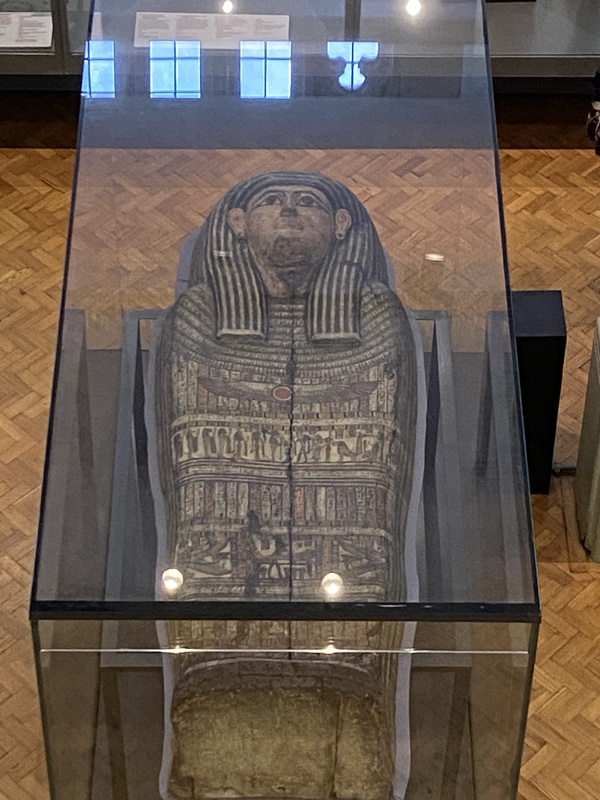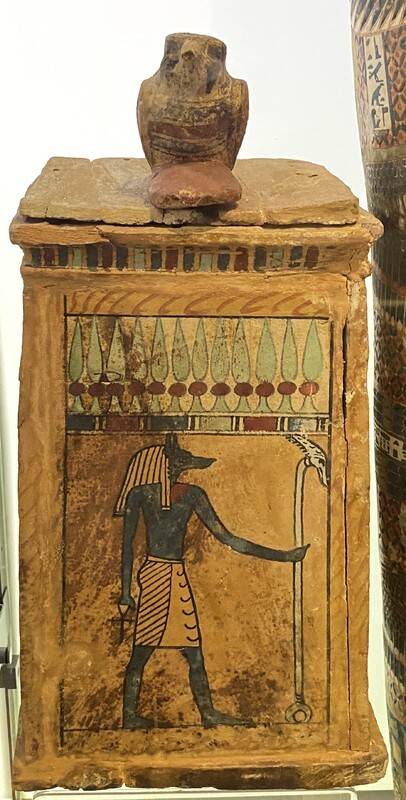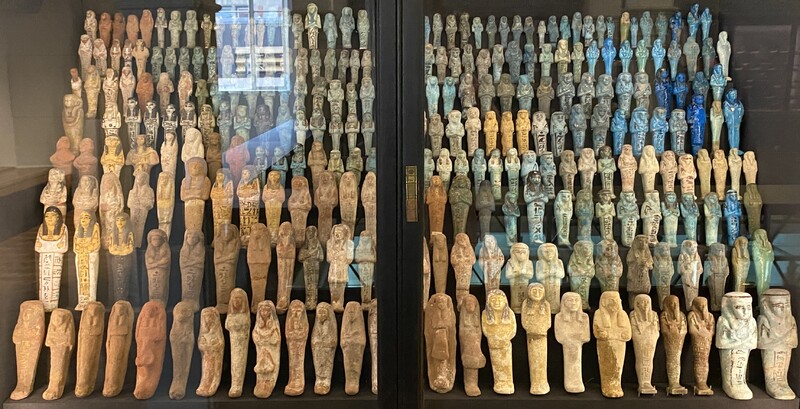Death

Mummified body and coffin of a woman named Asru
This is Asru. She lived around 750-650 BCE, likely in the ancient city of Thebes. Her coffin is painted with hieroglyphs that tell us her name, as well as the names of her parents. Her father's name was Pa-Kush, which translates to 'The man from Kush'. Kush refers to an area that is now northern Sudan. At this time period Egypt was ruled by Kush, and her father's name, as well as the style of her coffin suggest that Asru was wealthy, important and beloved. Asru was a temple singer, which was an important position in society at the time, justifying her elaborately painted set of two coffins. The painting on the sides of her coffin depict her journey into the afterlife, including her judgement by the god Thoth, who has the head of an ibis.
Asru's body was preserved through a ritual of mummification that was intended to prepare her body for reaching the afterlife. Her body was embalmed and covered in linen wrappings. These wrappings were removed by the Manchester Natural History Society in 1825 in an effort to learn more about Asru and the process of mummification.

Canopic chest
Canopic chests were used to store organs that had been removed during the mummification process, typically the lungs, liver, intestines and stomach. This particular chest is wooden and painted with a figure of the jackal-headed god of funerary practices and care of the dead. The chest features a model of a hawk, which represents Qebehsenuef, a son of Horus. Each son of Horus is assigned to protect a specific organ; the presence of Qebehsenuef indicates that this chest was used to store intestines. Being from approximately the same time period, it is likely that Asru would have had canopic chests or jars to store her organs.

Shabtis
'Shabtis' are servant figurines intended to act as substitutes or workers in the afterlife for the deceased. From their inscriptions we can learn information on the titles of their owners. Shabtis were placed in Egyptian tombs between circa 1800 to 300 BC. Because of their availability in large numbers, as well as their convenient size and appealing colouring, Shabtis were sold as tourist souvenirs. Many have been donated to museums